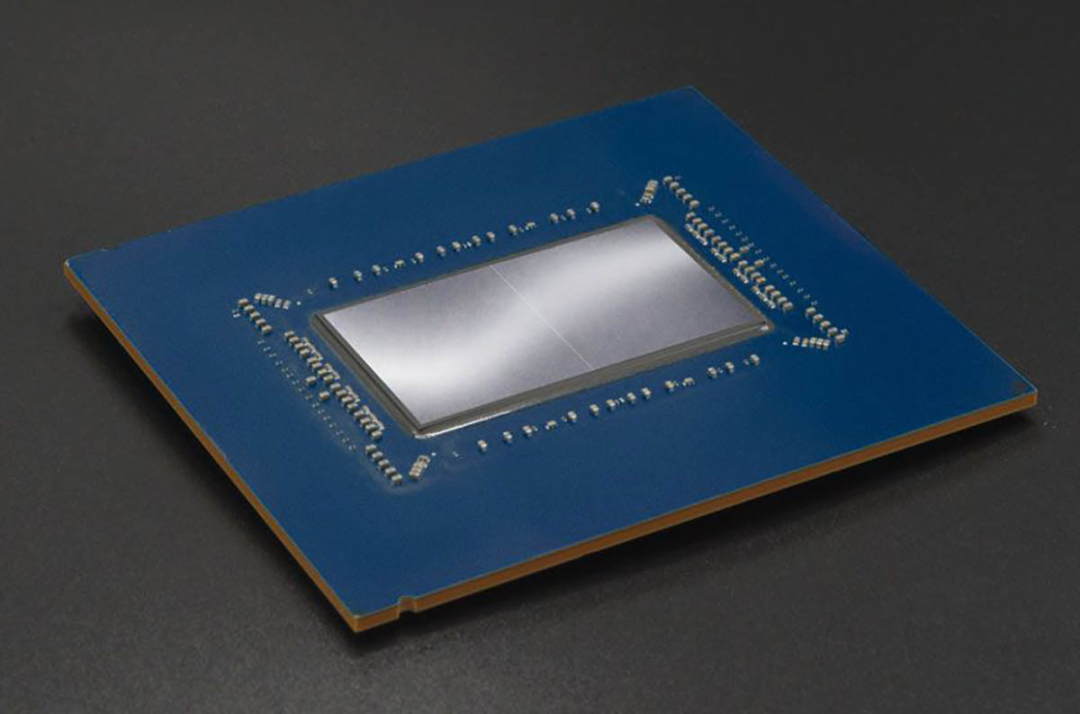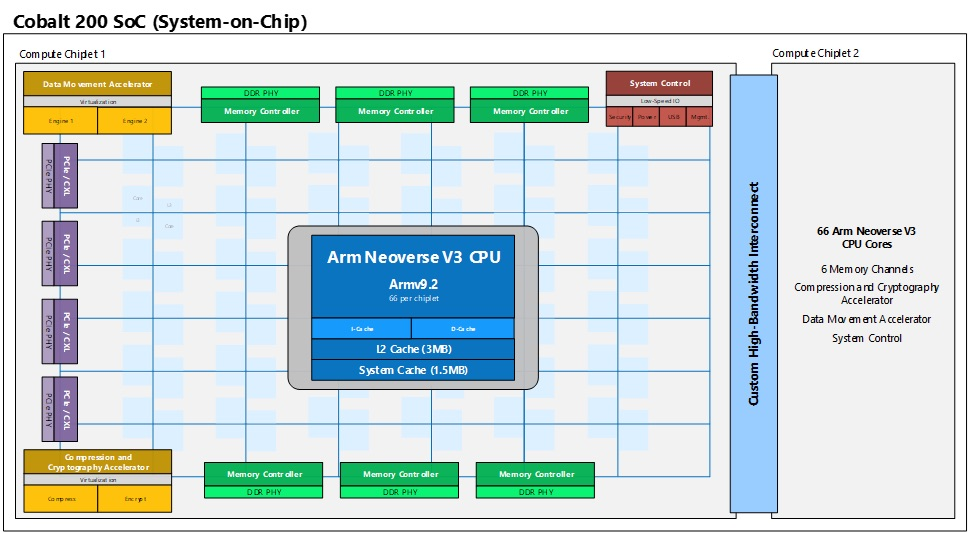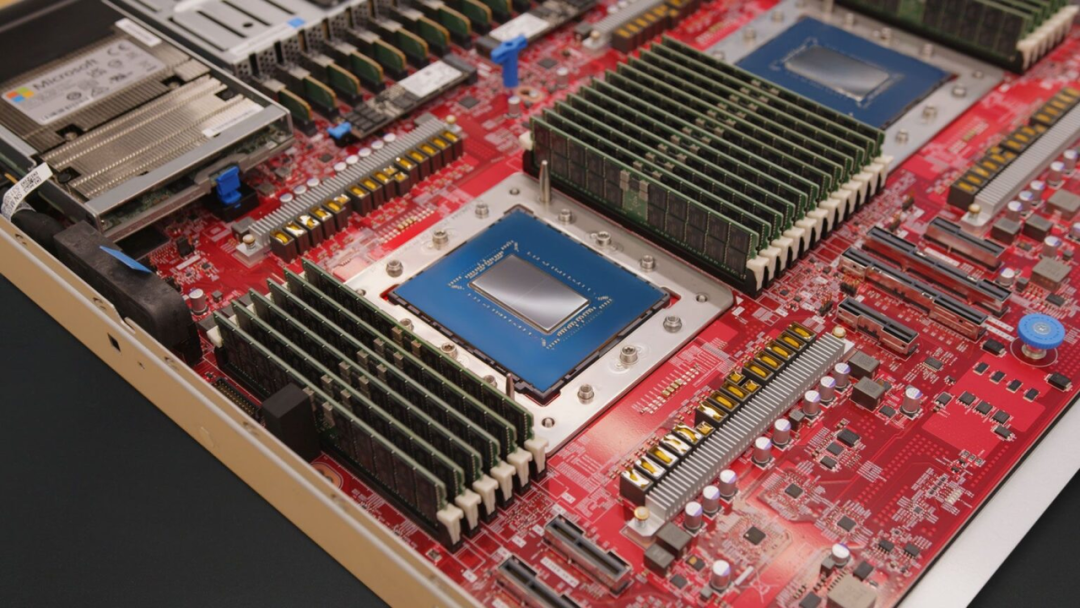Low-Power Cloud Processor: Microsoft Unveils Cobalt 200
![]() 11/28 2025
11/28 2025
![]() 352
352

Produced by Zhineng Zhixin
Microsoft has launched the Cobalt 200, an Arm architecture-based processor designed specifically for Azure. This processor boasts systematic enhancements in architecture design, energy efficiency, and security protocols.
Compared to its predecessor, the Cobalt 100, the Cobalt 200 delivers a 50% boost in performance, expands its core count to 132, and marks several industry firsts for server-grade Arm processors. These include per-core DVFS (Dynamic Voltage and Frequency Scaling), bespoke hardware accelerators, a confidential computing architecture, and a cutting-edge 3nm manufacturing process.
For data center engineers, the cloud center landscape is witnessing a shift towards balancing high performance with low power consumption.

The Cobalt 200's architecture is meticulously crafted based on extensive real-world workload data from Azure. This encompasses web services, data analysis, network-intensive applications, and various system components reliant on compression and encryption. In essence, it is tailored to meet the demands of scenarios characterized by "moderate single-thread performance requirements, extremely high concurrency, and frequent storage access."
To cater to these demands, Microsoft has developed a new generation of computing units leveraging the Arm Neoverse V3 CSS. Through dual-chip packaging, it achieves a comprehensive layout of 132 physical cores.

From a core-level design standpoint, each core is equipped with 3MB of L2 cache, while the entire processor boasts 192MB of L3 cache. This effectively buffers cross-core access and frequent context switching in high-concurrency environments.
The two chips are interconnected via high-bandwidth links, ensuring that remote access latency between cores remains manageable.
Unlike traditional dual-socket servers that rely on motherboard interconnections, Cobalt 200 offers SoC-level point-to-point bandwidth within the package. This maintains throughput stability even under high thread density conditions.

To further bolster energy efficiency, Microsoft has incorporated per-core DVFS technology into Cobalt 200. This allows cores to independently adjust their voltage and frequency, enabling fine-grained control over CPU utilization based on the actual usage of containers or virtual machines in a multi-tenant environment.
For cores handling low-priority, less demanding, or intermittent tasks, reducing frequency directly translates to significant energy savings. Conversely, for large-scale analysis or compression tasks, the system can increase frequency on specific cores as required.
In a dense 132-core architecture, the cumulative energy-saving effect of 1-2W per core is particularly noteworthy for optimizing overall power consumption.
The chip's 3nm manufacturing process also contributes to power reduction. By shrinking the process, not only is leakage reduced, but more cores and acceleration modules can be deployed within a constrained energy budget. Coupled with the dual-chip packaging structure, the thermal design power is focused on enhancing parallel performance rather than boosting single-core peak performance.
Hardware accelerators are a standout feature of Cobalt 200, encompassing dedicated compression, decompression, and encryption modules.
These accelerators have been customized and optimized for Azure's internal workloads, directly replacing CPU hotspot computation paths in up to 30% of work scenarios. They offer acceleration of several times for specific tasks while reducing power consumption and thermal load on cores during high-throughput intensive tasks, resulting in a cleaner CPU scheduling landscape.
Their impact is akin to that of Intel Xeon's QAT or DSA, but with deeper instruction and data path customization tailored for cloud tasks.

Regarding the security system, Cobalt 200's customized memory controller enables memory encryption by default. Unlike traditional software solutions, Microsoft leverages an Arm architecture-based confidential computing framework. This allows memory within virtual machines to be completely shielded from the host operating system and hypervisor.
This is paramount for Azure's multi-tenant model, as it reduces the likelihood of platform-side operating systems or even administrator-level access to customer data, thereby lowering the structural risk of data breaches.
Memory encryption typically introduces bandwidth degradation or additional access latency. However, Microsoft claims to have optimized its design for minimal performance impact. Given the characteristics of the V3 architecture, it can be inferred that Microsoft has incorporated latency compensation, write optimization, or aligned instruction paths within the memory controller to ensure encryption does not impede system performance.
At the second layer of the security system, Cobalt 200 seamlessly integrates Azure HSM. This utilizes hardware modules to ensure that keys remain protected throughout their lifecycle - from generation to storage, distribution, and rotation. The Key Vault functions as a horizontal service within the system, handling the availability and elastic scalability of encryption keys.
Under this framework, keys do not require management at the operating system level, significantly enhancing compliance and simplifying data center efforts to adhere to various industry security standards.
Hardware offloading remains a cornerstone of system-level performance optimization. Azure Boost technology migrates high-bandwidth, low-latency tasks such as network stack processing and remote storage access from the CPU's main path to dedicated network and storage acceleration hardware.
Consequently, Cobalt 200's core resources can be more dedicated to user containers and virtual machines, rather than being consumed by systemic background tasks.
Combined with the encryption and compression units mentioned earlier in the UAV electronic system architecture and chip design highlights, the entire system forms a comprehensive multi-layered offloading structure. This ensures that CPU resources are more exclusively focused on "billable computation."
Summary
The introduction of Microsoft Cobalt 200 underscores Microsoft's commitment to its self-developed server CPU roadmap. From the 3nm process and 132-core architecture to per-core DVFS and dedicated acceleration modules, and further to the system integration of memory encryption, HSM, and Boost, it strives for scalable performance density while prioritizing controllable energy consumption and overall throughput.








